Innovations "made by Empa"
At Empa, we have a long-standing tradition of converting the results of our research and development activities into marketable products, either in close cooperation with our industrial partners or by spin-offs. This goes to show that knowledge dissemination and technology transfer are a top-priority for us!
$ 5.7 million to industrialize ultra-thin solid-state batteries

Nov 6, 2025
Swiss battery start-up BTRY AG has raised $ 5.7 million in an oversubscribed seed round. The funds will accelerate the industrialization of its ultra-thin solid-state batteries – a new category of energy storage combining fast charging, extreme temperature stability, and intrinsic safety in one of the world’s thinnest formats. They power next-generation devices such as connected labels, wireless sensors, and wearables – applications where conventional batteries could not fit or endure. More here.
Three researchers receive start-up funding

Oct 21, 2025
Ultrathin terahertz optical components, large-area strain sensors and surface microstructuring with high throughput rates: For these innovations, three Empa researchers – Elena Mavrona, Mohammad Jafarpour and Nicolas Zaugg – have been granted this year's Empa Entrepreneur Fellowships, which will enable them to exploit their research to develop innovative products. More here.
Award-winning railway bridge with Swiss carbon cables

Sep 16, 2025
The multi-award-winning Oder Bridge near Küstrin is supported by a network arch with prestressed carbon cables. These ultra-lightweight yet extremely durable tension members made of carbon fiber reinforced polymers (CFRP) were largely developed, tested, and evaluated at Empa. More here.
Colouring Dübendorf – a research project on the future of energy

Jul 9, 2025
The city of Dübendorf and Empa are joining forces to send a strong signal for climate protection: The Colouring Dübendorf research project is working with the local population to investigate what a sustainable and locally coordinated energy future could look like. Initial findings from the Gfenn district are being incorporated into an innovative energy model – with the aim of identifying specific ways to achieve the net-zero target. More here.
More sustainable blind tapes thanks to water-based coating

30 Jun, 2025
As part of an Innosuisse project, together with Huber & Co. AG Bandfabrik from Oberkulm in the canton of Aargau, a new and sustainable coating for blind tapes was developed. The blind tapes with this new coating can be produced in a much more environmentally friendly way, as the previous solvent-based coating has been replaced by a water-based one. Blind tapes produced using this new manufacturing method are currently being tested by our business partner and will be used in various residential construction projects in the future.
Digital solutions pave the way to net-zero

Apr 30, 2025
After a two year-project, Thurplus, the city of Frauenfelds's utility company, and Empa last Wednesday presented the report, Energy Perspectives 2050. The project sheds light on energy scenarios from today to 2050, extrapolated from around 20,000 smart meter data sets. The conclusion of the study: Net zero is feasible – the key lies in district heating and replacing conventional, fossil heating systems. More here.
Energy-efficient cooling thanks to ionic wind
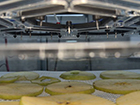
Jan 30, 2025
Thanks to a new type of airflow booster for ionic wind, completely new fields of application are opening up for the start-up Ionic Wind Technologies. In future, the patented technology is to be used primarily for cooling data centers and high-performance electronics. The Empa spin-off has already won several awards. More here.
Net zero in the 'Graubünden Rheintal' by 2050 technically feasible and economically attractive

Jan 15, 2025
How can decarbonization be implemented cost-effectively in the 'Graubünden Rheintal'? The canton of Graubünden, the energy suppliers and leading industrial companies in the 'Graubünden Rheintal' have investigated this question together with Empa using innovative modeling techniques. The results confirm the assessments of the Economic Forum: Decarbonization is technically feasible and economically interesting. The Empa study provides concrete technical implementation steps and serves as a model example that can also be transferred to other regions. More here (in German only).
Sensor protects against life-threatening complications of abdominal surgery
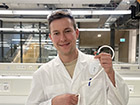
Nov 4, 2024
The Empa Innovation Award recognizes outstanding projects that bridge the gap between the laboratory and industry. This year, a team of researchers from Empa and ETH Zurich is being honored for an innovative sensor system: SensAL warns quickly and precisely of life-threatening complications after abdominal surgery. More here.
Tomorrow's start-ups: Empa supports neo-entrepreneurs

Oct 15, 2024
Drones for firefighting, surgical laser tissue soldering with robots and software for intelligent energy management: This year, three Empa researchers have been awarded an Empa Entrepreneur Fellowship to develop innovative products based on their research. More here.
Stardust in the bathroom

Oct 1, 2024
Widespread skin diseases such as psoriasis or neurodermatitis are difficult to treat. Together with an industrial partner, Empa researchers have found an innovative solution: Nanoceramic "stars" create tiny skin lesions and allow therapeutic molecules to reach their site of action. More here.
Solar cells for the Internet of Things

Sep 24, 2024
Perovskia Solar has won more than ten leading companies from the Internet of Things (IoT) industry as customers and received over two million Swiss francs in seed capital. The multi-award-winning Empa spin-off prints customized solar cells for almost any electronic device. These can be produced cost-effectively – and even work indoors. More here.
Storing the sun's heat at 1200 degrees

Sep 19, 2024
The ETH spin-off Synhelion has recently inaugurated the world's first industrial plant for the production of solar fuels in Germany. The heart of the plant contains a piece of Empa technology: Together with Synhelion, Empa researchers have developed a material for the high-temperature thermal energy storage system that allows the plant to remain in operation 24/7. More here.
Electricity from waste heat thanks to new piston machine
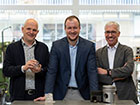
Feb 15, 2024
Industrial waste heat is an untapped goldmine: It is produced in large quantities, but is hardly used efficiently. A new type of machine developed by Empa scientists and their partners based on an innovative engine technology could change this – also with the help of an Empa Entrepreneur Fellowship, which was recently awarded to Empa researcher and neo-entrepreneur Andyn Omanovic. More here.
A new factory to cater Perovskia customer needs
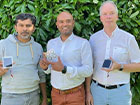
Jan, 24 2024
Perovskia, an Empa spin-off, is setting up an ambitious factory in Aubonne (VD) to print a million of its custom-designed perovskite devices (solar cells) every year. Production is set to be operational in a few months. The indoor solar cell company has been gaining ground worldwide, with customers in Japan, Korea, India, Europe and the USA. More here.
Successful financing round for Empa spin-off BTRY

Jan 18, 2024
BTRY, a spin-off of Empa and ETH Zurich, has successfully completed its first round of financing; the young company has received 900,000 Swiss francs from the High-Tech Gründerfonds (HTGF) and Zürcher Kantonalbank (ZKB). The start-up develops safe, long-lasting thin-film solid-state batteries that can be charged and discharged in just one minute. BTRY is using the financing to manufacture a first generation of products on a pilot line. More here.

Moving X-ray images of the musculoskeletal system
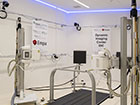
Nov, 10 2023
Empa is one of the partners who have jointly built the new Dynamic Imaging Center (DIC) in Bern. The DIC was opened at the Swiss Institute for Translational Medicine and Entrepreneurship (sitem insel) in mid-November 2023. For the first time, X-ray images of a moving person can now be taken there simultaneously from two different directions. More here.
Bruker announces majority investment in MIRO Analytical AG
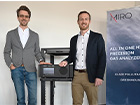
Oct 4, 2023
As of today, the Empa spin-off MIRO Analytical AG is part of the Bruker Corporation. The spin-off was founded in 2018 by Empa researchers Morten Hundt and Oleg Aseev and develops analytical instruments for measuring greenhouse gases and air pollutants. More here.
Swim and run without changing

Jun 20, 2023
Just in time for summer: The Swiss start-up Swijin is launching a new sportswear category with its SwimRunner – a sports bra together with matching bottoms that works as both swimwear and running gear and dries in no time. The innovative product was developed together with Empa researchers in an Innosuisse project. The SwimRunner can be tested this weekend at the Zurich City Triathlon. More here.
A piece of Empa on your wrist

May 24, 2023
Empa research helps Swiss watches to glow in the dark: The luminescent material Swiss Super-LumiNova, which was refined at Empa, now adorns the hands and dials of a number of wristwatches, including the MoonSwatch collection from Swatch and Omega. More here.
Hochuli Advanced: explanatory videos on The ALPET® insulation bar
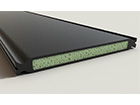
April, 2023
Together with Empa, Hochuli Advanced has developed a new type of insulating bar for lightweight construction and window or facade systems (/web/s604/alpet-daemmsteg). The technology and its applications are now explained in three short videos.
- Explaining video system house
- Explaning video industry
- Video circular economy
CTsystems: A marathon to the market
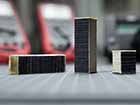
Mar 17, 2023
Developing a product from an innovative technology takes years, sometimes decades. Gabor Kovacs has lived through this process with his spin-off CTsystems AG and electroactive polymers at Empa. From the idea, through creative tinkering, setbacks, progress and the right comrade-in-arms, to the acquisition by a large company: experiences and a conclusion. More here.
New technology revolutionizes the analysis of old ice
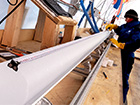
Feb 16, 2023
Ice cores are a unique climate archive. Thanks to a new method developed by researchers at the University of Bern and Empa, greenhouse gas concentrations in 1.5 million year old ice can be measured even more accurately. The EU project “Beyond EPICA” with the participation of the University of Bern aims to recover such old ice in Antarctica. More here.
Ready for sustainable growth

Dec 5, 2022
Founded in February 2018 as an Empa spin-off, the start-up company MIRO Analytical received one of the coveted Innosuisse Certificates in October. The certificate reflects the remarkable progress the young company made during the funding agency's coaching program and confirms that the start-up is ready for sustainable growth. More here.
A sensitive drill
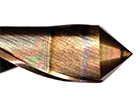
Nov 29, 2022
Hearing-impaired people whose auditory nerve is still intact can often be helped with a cochlear implant. But inserting the implant into the inner ear is not without risks, as facial nerves can be damaged in the process. Empa researchers have developed a novel smart drill that minimizes the risk by automatically shutting off when it comes near nerves. More here.
Textile electrodes for medtech applications
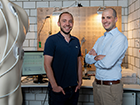
Oct 12, 2022
Nahtlos, an Empa spin-off, has received 1 million Swiss francs in a first round of financing from a network of business angels from Switzerland and Liechtenstein and from the Startfeld Foundation. With this funding, Nahtlos aims to drive the market entry of its newly developed textile-based electrode for medical applications. More here.
Promising acquisition of Empa spinoff CTsystems
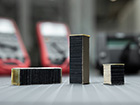
Sep 6, 2022
The Empa spinoff CTsystems AG is acquired by Daetwyler, a company specializing in elastomer components. The partners see great market potential for a wide range of applications in industrial scale stack actuators, the development of which once began at Empa. More here.
A self-learning algorithm that helps save heating energy

Sep 1, 2022
With energy prices soaring, heating costs will also inevitably rise in the coming winter. In order to mitigate this, solutions for operating buildings more efficiently are needed. The Empa spin-off viboo has developed an algorithm that makes it possible to operate even older buildings with around 25 percent less energy – while user comfort remains the same or even improves. More here.
"Camouflage" sensor monitors fruit cargo
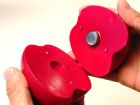
Mar 22, 2017
On the long journey from the fruit plantation to the retailer's shelf, fruits can quickly perish. In particular, the refrigeration inside the cargo containers is not always guaranteed and existing methods for measuring the temperature are not sufficiently reliable. A sensor developed at Empa solves this problem. It looks like a piece of fruit and acts like a piece of fruit – but is actually a spy. More here.
Soft sensors for smart textiles
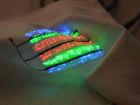
Mar 9, 2017
Empa researchers have succeeded in producing optic fibers for sensors that are ideal for textiles. This would enable hospitals to monitor whether a patient is developing pressure sores, for instance. More here.
Summer heat for the winter
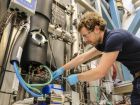
Jan 10, 2017
Can thermal solar energy be stored until wintertime? Yes, this is possible, using a cheap material like sodium lye. Within a European research consortium Empa scientists and their colleagues have spent four years studying this question by pitting three different techniques against each other. More
Space age material for the masses

Dec 8, 2016
Aerogel is the perfect material for many insulation purposes. It is heat-resistant up to 600 degrees, ultralight, non-toxic – and provides excellent thermal insulation. Only its complicated and expensive production causes quite a headache. An Empa start-up is about to revolutionize the manufacturing process. If successful, there will soon be affordable aerogel for everyone. Find out more.
Finally Red - New Omega Speedmaster with Empa ceramic bezel

Oct 27, 2016
Empa researchers have pulled off a masterstroke of ceramics research: as of now, a dark-red ceramic bezel adorns a Swiss luxury watch – a world premiere and stunning example of top-flight materials science. More.
Swiss luxury lady’s watch featuring gold thread by Empa

Apr 6, 2016
Lovers of fine embroidery and luxury gold watches can now enjoy the best of both worlds in the Big Bang Broderie Gold line in lady’s watches produced by the manufacturer Hublot. The watch face features embroidery by the traditional Swiss brand Bischoff. And the shiny golden thread is produced by Tersuisse Multifils SA in Emmenbrücke using a technique patented by Empa. It involves cold-vaporizing a piece of gold in a plasma process. The metallic vapor settles on the thread and sticks.
For the Big Band Broderie line, the gold thread is stitched onto carbo fibers, dipped in synthetic resin and pressed. After all, the watch’s hands mustn’t catch on the embroidery.
PRODEX: Instruments with Empa know-how in space
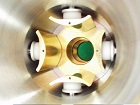
Jun 8, 2016
Since 18 years, Empa has been developing analytical apparatuses for space missions operated by the «European Space Agency» (ESA). Rosetta, BepiColombo, or Luna relied on Empa-Technologies. In June 2016 a workshop and information day for scientific and industrial partners took place in the Empa-Akademie. More.
Polarmond – using body heat to warm your tent

Sep 23, 2015
In collaboration with the «Polarmond» start-up company, Empa researchers have developed a self-heating «All-in-one» tent system. A special humidity management feature and step-less temperature control system guarantee comfortable temperatures in the tent at all times. To achieve their goal, the Empa scientists had to combine ideas, materials and techniques from a wide range of different fields in an extremely innovative way. Read more.
Roll on flexible solar cells
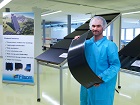
In a few months, in the Swiss town of Niederhasli, the production of flexible solar cells will begin – by the roll and up to a meter wide. Employing technology developed by Empa, the start-up firm Flisom will begin the manufacture of these economic solar cells in film format. Altogether it has taken more than 18 years of research and development, most of which took place in Empa laboratories, to reach this pilot plant stage. More.
Concrete heating system
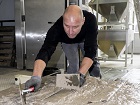
Building physicist Mark Zumoberhaus aims to use concrete to keep his holiday home in canton Uri warm over the coming winter. To achieve this, he will be using 6 m³ of special concrete developed by Empa, installed in the garage of his house. The concrete absorbs heat in summer and stores it till it is needed in winter, when the warmth is released. Read more.
Helping carpenters to cut wood faster
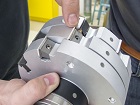
Instead of using conventional cutting tools made of metal, Swiss carpenters will in future be able to work their wood with ceramic-bladed equipment. Not only is the latter faster than the metal equivalents, but it also solve the problem of the supply bottleneck which is currently facing woodworking companies using metal knives. These novel ceramic blades were developed by a research team of Empa scientists, in collaboration with staff from the company Oertli Werkezeuge AG. Read more.
The ultrafast recharching point
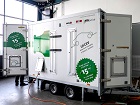
Recharge the batteries of an electric vehicle in just five minutes instead of the seven or eight hours usual today? Not a problem for the new charging system developed by Empa researchers. All the novel charging station needs is to be plugged into an everyday industrial electrical connector. The innovative system functions with the help of a large battery-like storage device which can be charged up slowly but very quickly discharged. Find out more.
Artificial hip joints made of ceramic
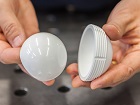
The metal alloys used in conventional surface replacement artificial hip joints suffer from the problem that metal particles abraded by friction in the joint can reach the patient’s bloodstream. This often gives rise to health problems. In order to avoid this situation Empa staff have, in collaboration with colleagues from the company Metoxit AG, developed an artificial hip joint of high-performance ceramic. This material is not only more wear resistant, but is also better tolerated by the human body. More.
Needle-free blood sugar measurement
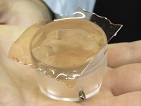
In order to monitor the blood sugar level of premature babies, doctors must draw blood samples, which causes pain and stress for the tiny patients. To avoid this Empa scientists working together with staff at the Zürich University Hospital have developed a new sensor called “Glucolight”. The new device measures blood sugar levels directly through contact with the skin, which in premature babies is very thin. The novel instrument uses a light-controlled membrane technique developed at Empa. Find out more.
A chest strap for the heart
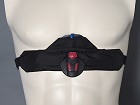
In order to allow the long-term monitoring of patients with heart and circulatory problems, Empa has developed a chest strap which incorporates flexible humidifying elements. The latter produce a kind of artificial sweat, thereby moistening the skin under the electrodes, which is necessary for the optimal measurement of electrical signals from the body. To date gel electrodes have been used for monitoring devices, but these dry after 24 hours, thereby becoming usable. Read more.
Flame protection for the jet set

A new coating protects business jet interiors against fire. Not only is the agent more environmentally friendly than before; it can also be applied more quickly. This new coating could also be used in textiles and wood-based furnishing and architectural systems. More information can be found here.
Innovative floor panels
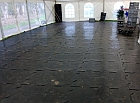
In collaboration with Supramat-Swiss GmbH, Empa has developed easy to transport panels, that protect the ground.They have also optimized panels that prevent heavy equipment from sinking in mud. They make it easy to recover aeroplanes that came off the runway. More information can be found here.
Compliant materials with a strong impact
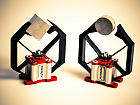
The recent Empa spin-off Monolitix AG specialises in compliant mechanisms. These are frictionless and wear-free and are also lighter, more hygienic and cheaper than conventional joint mechanisms. They have an enormous range of potential applications in the most diverse fields. The new company's young entrepreneurs are now setting about breaking into the market with their first products. More information can be found here.
Textile pressure ulcer prevention

Immobile patients are in constant danger of developing pressure ulcers on the skin. Empa, Schoeller Medical and the Swiss Paraplegic Centre have worked together to develop a special sheet that is gentle on the skin and helps to make patients more comfortable. More information can be found here.
Aerogel-based plaster provides better insulation for old buildings
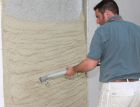
Old buildings are beautiful – and hard to insulate. Empa and the Swiss render manufacturer Fixit AG together developed a new Aerogel-based plaster that provides twice the insulation of currently used insulating renders. More information can be found here.
Monitor assesses the mobility of bed-ridden patients

A monitoring system became commercially available that will allow nursing staff to accurately record the mobility of bedridden persons. The system has been developed for the prevention of bedsores by Compliant Concept, a start-up at Empa’s glatec technology center. More information can be found here.
Real smart: protective clothing with built-in A/C

Empa has together with its industrial partner, unico swiss tex, developed a «smart» protective vest with an integrated cooling system. The first small series of the novel under-uniform protective vest will be produced in the near future. More information can be found here.
Innovative incontinence briefs offer security in everyday life
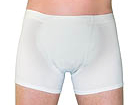
Scientists at Empa have worked with the industrial partner Incosan GmbH to develop a multi-layer pad and special briefs to make daily life easier for people suffering from incontinence. The products recently came onto the market. More information can be found here.
Improved ergonomics for wheelchair users

Empa engineers, together with the firm «r going», have succeeded in developing an ergonomic seat for electric wheelchairs which encourages the user to move around frequently. True to the motto «life is movement » the aim is to enhance the freedom of movement of wheelchair users with a range of disabilities. More information can be found here.
Finest silk – purest gold

True luxury has only one color – gold. A nanometer-thin layer of pure gold now lends ties and pocket handkerchiefs that authentic gold sheen, thanks to a new Empa-developed process. The yarn, which is coated using a high-tech plasma process, is soft and easy to weave. It is also washing machine compatible. A limited number of gold ties will be placed on the market before Christmas, making a truly exclusive present. Further fashion accessories will follow in 2012. More information can be found here.
Noise-quenching curtains

Researchers at Empa, in cooperation with textile designer Annette Douglas and silk weaving firm Weisbrod-Zürrer AG, have developed lightweight, translucent curtain materials, which are excellent at absorbing sound. This is a combination that has been lacking until now in modern interior design. The new «noise-quenching» curtains have just gone onto the market. More information on the new curtains can be found here.
Artificial turf with upstanding qualities
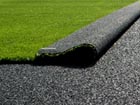
Empa researchers and scientists from the «Institute for Rapid Product Development» at the ETH Zurich, together with TISCA TIARA, a Swiss manufacturer of artificial turf, and the German fiber manufacturer Schramm GmbH, have developed a novel fiber for use in making artificial turf. The bi-component fiber returns to an upright position again and again thanks to a “hard core” but its soft sheath prevents abrasions and grass burns when players fall or slide on the surface. The turf has already been laid on two football pitches in Switzerland. More information on the new artificial turf can be found here.
Repairing spray coatings
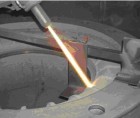
The maintenance interval of water turbines is determined by the degree of erosional wear which the blades suffer. Repairs are time consuming and expensive since dismantling and reassembling a turbine can take up to several months, depending on the type involved. The use of hard coatings increases the operating lifetime of the turbine blades but partial damage to the coatings frequently occurs. Empa and the firm Stellba Schweisstechnik AG have together developed and patented a method of partially repairing these spray coatings of tungsten carbide composite material. The good results obtained in laboratory studies have been confirmed by practical tests on water turbines, and the method is now being used successfully in commercial applications.
Two-component fiber improves the properties of concrete

In a project supported by the Innovation Promotion Agency (CTI), a team of Empa scientists and their industrial partner, the fiber manufacturing company fibrotec ag, have developed an economical polymer fiber which can withstand high mechanical loads. They were assisted by a new production process which allows the manufacture of fibers made of two components. The core of the newly developed fiber is made of polypropylene (PP) whilst only the thin fiber sheath is made of a special, tailor-made polymer which is chemically and mechanically ideally suited for use in building materials using a cement binder. The bicomponent fiber is already commercially available and is produced by Brugg Seiltechnik Holding AG. More information on this product can be found here.
DownMat – an air mattress filled with goose-down

Top-level mountaineers climbing in extremely cold conditions at high altitude need not only a top-quality sleeping-bag but also a highly insulating mat to sleep on. In cooperation with the company Exped, Empa has developed a functional example of such a mat, consisting of goose-down filled air chambers which retain their shape under pressure. Measurements made at Empa showed that the thermal insulation of the new mats is 5 times better than conventional types. The idea was taken further by the outdoor-equipment suppliers Exped AG who, jointly with Empa, have applied for a patent. After further development the sleeping mat is now being produced commercially and is being sold very successfully under the brand name “DownMat“.
Wireless sensor network

The Stork Bridge in Winterthur was fitted with a total of seven sensors developed by Empa for long term testing purposes in the course of the EU project ”Sustainable Bridges“. The sensors monitor vibration levels in the bridge structure and other unusual mechanical behavior, and if necessary raise the alarm at Empa via a radio link and internet connection. The advantages of this remote monitoring system is that it is rapidly installed, very flexible and economic, since wireless sensors obviate the need for fitting the bridge with expensive cabling systems. The technology is now being commercialized by the Empa spin-off company DecentLab GmbH.
PPMS-AFM – a high precision measuring instrument
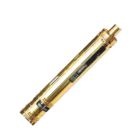
The PPMS-AFM is a high precision measuring instrument which unites surface analysis techniques on the nanometer scale with a device for measuring macroscopic properties, known as the PPMS® (Physical Properties Measurement System). The technology was developed at Empa and has been successfully transferred to the startup company NanoScan AG. In 2009 NanoScan began marketing the PPMS-AFM on a commercial basis under license to Empa. Since then the company has further developed the technology and is marketing the system internationally in collaboration with IONTOF, another of Empa’s industrial partners.
Metallized fibers using low pressure plasma method

At the end of 2007 Empa transferred the rights to its patent for a special fiber coating process to Tersuisse Multifils SA in Emmenbruecke, at the same time handing over its pilot plant to the company. The key to Empa’s success is a new fiber guidance system. On the one hand this allows a more rapid coating process and on the other it leads to the metal being applied more efficiently to yarns and fibers, which reduces the metal consumption. Both factors help to reduce manufacturing costs significantly, ensuring that in comparison to the conventional electrochemical process the advantages of the new technology take center stage. More information on this product can be found here.
Cooling system for multiple sclerosis patients
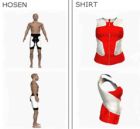
Empa scientists have developed ultra-light cooling garments for those suffering from multiple sclerosis (MS). Cooling trousers and shirts have been available on the market since April 2007, manufactured by Unico swiss tex GmbH, to whom Empa has transferred its patent. The small, innovative Swiss enterprise aims to market these products successfully in Switzerland, Germany and possibly even the USA. Cooling helps alleviate symptoms in 60 to 80 per cent of all MS patients. Further information on the cooling system is available here (m4v-Datei, 65 MB).
Jun Funori – Red algae for consolidating, aged and powdery painted surfaces
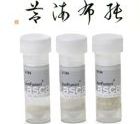
Funori, an adhesive material prepared in Japan from red algae of the family Gloiopeltis, has sparked the interest of restorers of art works, because of its ability to consolidate and strengthen layers of paint which have become lackluster and powdery with age. As a natural product, funori comes in varying qualities, and to tackle this problem a special purification process was developed jointly by the ETH Zurich’s Institute of Historic Building Research and Conservation, Empa and the Conservation Center of the Swiss National Museum. The resulting pure material, known as JunFunori (jun = pure) is a standardized product which has been tested by experts over a period of years. JunFunori offers conservators an improved consolidating agent which allows them to repair aged and powdery painted surfaces without changing them visually. Jun Funori is manufactured exclusively by the Lascaux company.
Zumikon Particle Separator
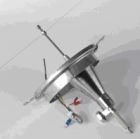
There are many good reasons which make wood an environmentally friendly source of energy. In particular, the fact that it is a CO2 neutral, renewable resource is an important advantage. In order that the fine particulate emissions of wood burning appliances do not act as a brake on the further development of wood as a fuel, Empa in cooperation with the Swiss Federal Office of the Environment (FOEN) has pushed forward with the development of a particle separator for small wood burning stoves. The further development of the prototype into a market-ready product has been taken on by the firm Rüegg Cheminée AG, who now offer the finished product commercially on the international market.
.
